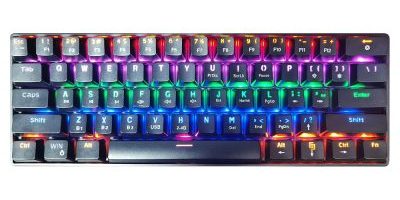Mechanical keyboards have a rich history that dates back to the early days of computing. Understanding their evolution can provide insights into their enduring popularity.
- Early Mechanical Keyboards: The first mechanical keyboards were introduced in the early 1980s, primarily using switches like the IBM Model F buckling spring. These keyboards were known for their durability and tactile feedback.
- Cherry MX Switches: In the 1980s, Cherry Corporation introduced the Cherry MX switches, which became a standard in mechanical keyboards. These switches came in various types, including the iconic Cherry MX Blue, Brown, and Red.
- Gaming Keyboards: With the rise of PC gaming, mechanical keyboards gained popularity for their faster response times and reliability. Gaming-focused keyboards often featured customizable backlighting and macro keys.
- Custom Mechanical Keyboards: Enthusiasts began building and customizing their mechanical keyboards, leading to the growth of the mechanical keyboard community. Customization options include keycap sets, switch replacements, and unique layouts.
- Compact and Ergonomic Designs: Manufacturers introduced compact and ergonomic designs, catering to users’ diverse needs. Split keyboards and ortholinear layouts gained traction for their ergonomic benefits.
- Wireless and RGB: Recent innovations include wireless mechanical keyboards with Bluetooth connectivity and RGB backlighting. These features offer greater flexibility and personalization options.
- Low-Profile Keyboards: Low-profile mechanical keyboards entered the market, appealing to users who prefer thinner designs and shorter key travel.
The history of mechanical keyboards showcases a journey from utilitarian input devices to customizable, ergonomic, and aesthetically pleasing peripherals. As technology advances, mechanical keyboards continue to evolve, meeting the demands of modern users.








